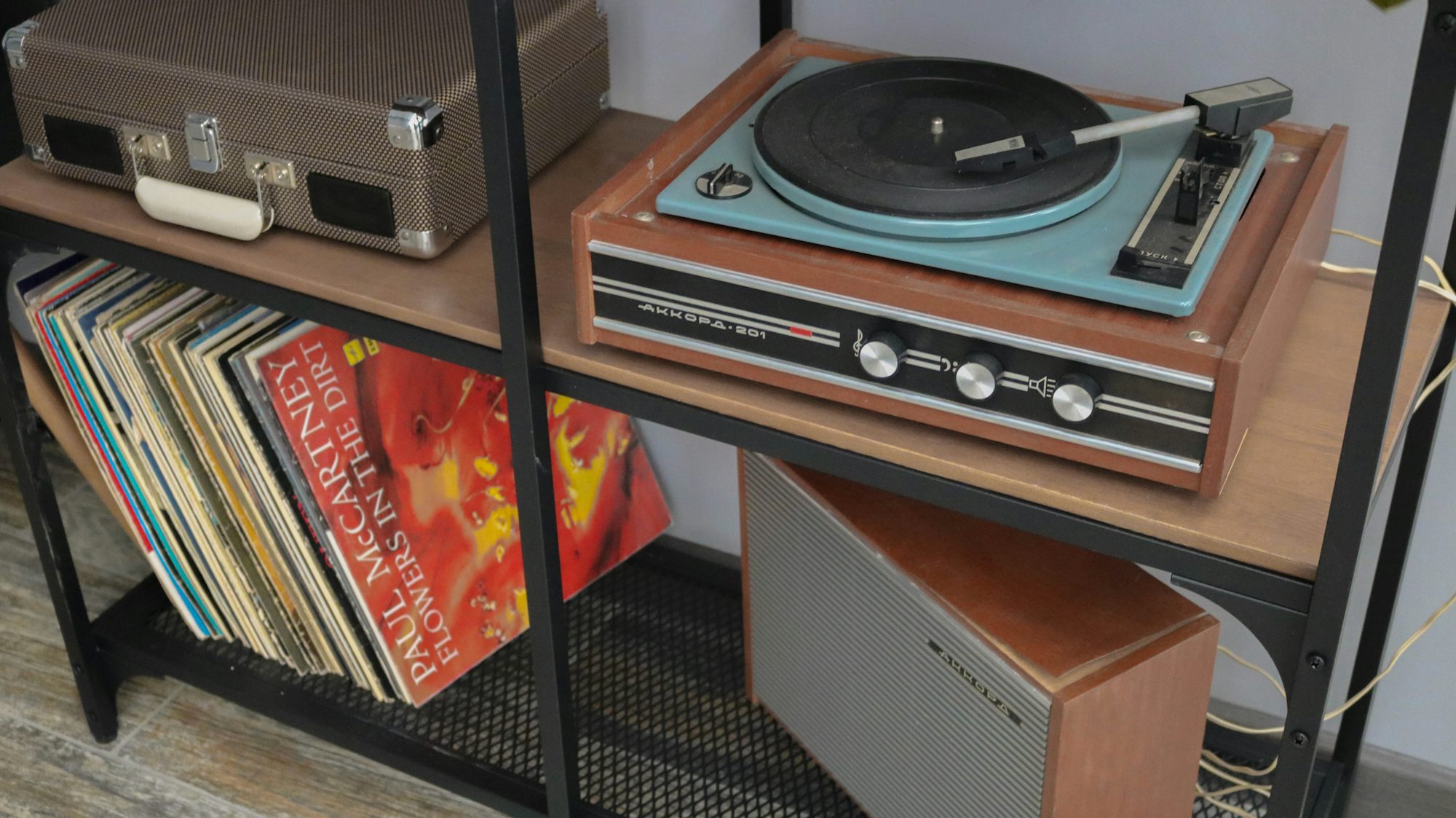Over the past century, the way we listen to music has transformed dramatically, with each new audio format reshaping the industry in significant ways. From the iconic crackle of a vinyl record to the instant access provided by streaming platforms, technological advancements in audio formats have shaped both the production and consumption of music. This article delves into the evolution of these formats, exploring how each transition from analog to digital, and then to streaming, has impacted the music industry and listener experiences.
The Rise of Analog Audio: A World in Sound
Before digital technology arrived on the scene, music was consumed largely through analog formats. The warm, organic sound of analog audio has long been cherished by audiophiles and musicians alike, with formats like vinyl records and cassette tapes taking center stage for decades.
Vinyl Records: The Classic Sound Experience
Introduced in the late 1800s, vinyl records were the dominant format for music from the 1950s through the 1980s. Unlike digital formats, which break audio into bits of data, vinyl records reproduce sound in a continuous, analog wave. This means the grooves etched into the surface of a vinyl disc directly correspond to the sound wave, resulting in a warmer, fuller sound that many music lovers still prefer today.
Vinyl’s resurgence in the 21st century speaks to the enduring appeal of this format. The tactile nature of records, combined with the larger-than-life album artwork, gives the experience of listening to music a sense of ritual and nostalgia that digital music cannot replicate. While vinyl may not offer the convenience of digital files, its sound quality and cultural cachet have made it an evergreen favorite among collectors and casual listeners alike.
Cassette Tapes: The Portable Revolution
During the 1960s, cassette tapes revolutionized music by offering a portable alternative to vinyl records. Unlike records, which required a turntable and limited the listener to a stationary position, cassettes could be played in a car, on a portable player, or at home. This portability helped usher in a new era of music consumption, making it easier to take your favorite albums on the go.
The cassette tape itself used magnetic tape to record audio, and while it provided a relatively lower sound quality compared to vinyl, it became a symbol of a more personal, DIY approach to music. In the 1980s, mixtapes—collections of songs recorded onto cassettes—became a cultural phenomenon, offering a way for individuals to express their tastes and share music with friends. However, as digital formats gained popularity, cassettes slowly fell out of favor.
The Digital Revolution: Compact Discs and Beyond
The next major shift in audio formats came with the introduction of digital technology, which enabled music to be stored and reproduced in a much more precise and versatile way. The compact disc (CD) was at the forefront of this revolution, followed by compressed audio formats like MP3s, which would further transform the way we consume music.
Compact Discs: A Leap in Sound Quality
When the compact disc (CD) was introduced in the early 1980s, it offered a leap in sound quality over both vinyl and cassette tapes. Unlike analog recordings, which can suffer from degradation over time, CDs use digital encoding to store audio as a series of binary numbers (1s and 0s). This allowed for pristine, noise-free sound reproduction, with no pops or hiss from physical degradation.
The CD quickly became the go-to format for music lovers, offering superior sound quality, increased capacity (up to 80 minutes of music), and the convenience of skipping tracks with ease. With the introduction of CD players, listeners could enjoy a more personalized and efficient listening experience. CDs also represented the first time that albums were sold as packaged collections of digital data, paving the way for the digital distribution of music in the future.
MP3s and Compressed Audio: Music for the Digital Age
In the late 1990s, the introduction of MP3 technology revolutionized the music industry once again. MP3s are compressed audio files that reduce the file size of a song by eliminating certain audio data that is less perceptible to the human ear. This compression made it possible to store thousands of songs on a single device, allowing users to take their entire music library with them wherever they went.
Although the MP3 format sacrificed some audio quality in the name of convenience, it quickly became the dominant format for digital music. With the advent of file-sharing services like Napster and the rise of digital music stores such as iTunes, MP3s became the preferred way for consumers to access music. The ability to download or stream individual tracks also signaled a shift away from the traditional album format and gave rise to the “playlist” culture that is still prevalent today.
However, with the trade-off in quality came a demand for better alternatives, which led to the development of lossless formats like FLAC, WAV, and AIFF.
Lossless Audio: The Pursuit of Perfect Sound
For audiophiles and music professionals, MP3s and other compressed formats were often seen as a compromise in audio quality. Lossless audio formats like FLAC (Free Lossless Audio Codec), WAV (Waveform Audio File Format), and AIFF (Audio Interchange File Format) provide a higher standard of sound fidelity by preserving the full resolution of the original recording.
Lossless formats are not compressed like MP3s, meaning they retain all the detail and dynamic range of the original performance. While they take up more storage space and are less convenient for portable devices, they offer the best audio experience for those who prioritize sound quality above all else. These formats have become popular in high-end audio systems and among serious collectors who want to experience music as close as possible to how it was originally recorded.
Streaming Audio: Music Anywhere, Anytime
Perhaps the most significant change in the way music is consumed today is the rise of streaming services like Spotify, Apple Music, and YouTube. Streaming has completely transformed the music industry by making music available on-demand, without the need for physical media or large digital downloads.
The Shift to Streaming Services
Streaming services provide users with instant access to millions of tracks from a wide variety of genres and artists, all without the need to purchase individual songs or albums. The convenience of streaming has led to the decline of physical media like CDs and vinyl for many consumers. With the click of a button, listeners can discover new artists, create custom playlists, and share music with friends.
Most streaming platforms use compressed formats like MP3 or AAC, which provide high-quality sound at manageable file sizes. Some services, such as Tidal and Qobuz, offer high-resolution audio streaming using lossless formats like FLAC, catering to audiophiles who seek the best sound quality. Regardless of the format, streaming services have made music more accessible than ever before, offering a vast library of songs that can be played at any time, from virtually anywhere.
The Impact of Streaming on the Music Industry
Streaming has had a profound impact on the music industry. On one hand, it has democratized access to music, allowing independent artists to reach global audiences without the need for a record label. On the other hand, the shift to streaming has led to changes in how artists and labels earn revenue, as streaming services pay artists per stream rather than per album or track sold. This has sparked debates over fair compensation for musicians and the sustainability of the streaming model.
Podcasts and Audiobooks: Expanding the Audio Landscape
While music remains the dominant form of audio consumption, other forms of audio content, such as podcasts and audiobooks, have exploded in popularity in recent years. These formats provide an alternative to traditional music and offer a wealth of information, entertainment, and storytelling.
Podcasts are typically free and cover a wide range of topics, from true crime to news, comedy, and self-help. With the ability to subscribe to a wide variety of shows, listeners can curate their own content and listen to episodes at their convenience. Audiobooks, on the other hand, offer a way to enjoy literature while on the go. Both formats have benefitted from the growth of streaming platforms, with services like Spotify and Audible providing easy access to vast libraries of audio content.
Conclusion: The Future of Audio Formats
From the crackle of vinyl to the clarity of digital streaming, the evolution of audio formats has continually reshaped how we consume music and other audio content. As technology continues to advance, new formats and innovations will undoubtedly emerge, further changing the way we experience sound.
The transition from physical media to digital and streaming formats has made music more accessible than ever before, but the debate over sound quality, artist compensation, and the role of physical media is far from over. Ultimately, the future of audio formats will depend on how both consumers and the music industry adapt to these technological shifts, ensuring that music remains as relevant and influential as ever.


